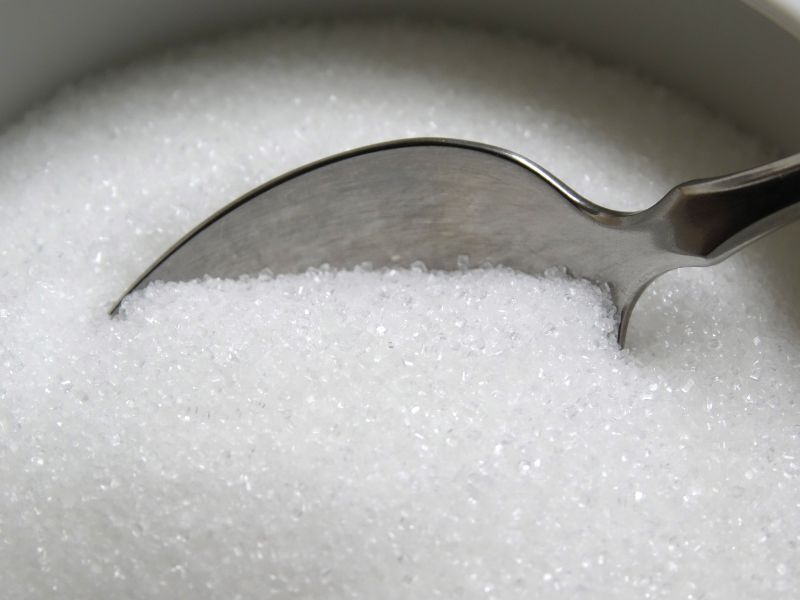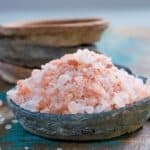Sugar has been used in various applications throughout history, from sweetening our food to creating beautiful works of art. However, many people might not know that sugar also plays a significant role in the soap-making process, but why do we add sugar to soap?
Adding sugar to soap enhances lather, providing a more luxurious and effective cleaning experience. It also offers moisturizing benefits, gentle exfoliation, and aesthetic appeal, resulting in a versatile and skin-loving soap that caters to various preferences and skin types.
As the art of soap-making progressed, so did the ingredients used to create it. Traditional ingredients like animal fats and wood ash have been replaced with plant-based oils, lye, and other additives to enhance the soap’s properties, such as fragrance, color, and texture. Sugar is one such additive that can bring a unique set of benefits to soap.
Types of Sugar Used in Soap-Making
White sugar
White sugar, also known as granulated sugar, is a common ingredient used in soap-making. Derived from either sugarcane or sugar beet, white sugar is refined to remove impurities and create a uniform, fine-grained product.
When added to soap, it increases lather and provides a gentle exfoliating effect.
Brown sugar
Brown sugar is another popular sugar used in soap-making. It is made by adding molasses back into refined white sugar, giving it a distinctive color and aroma.
Like white sugar, brown sugar adds lather and exfoliating properties to soap, but it also imparts a warm, sweet scent.
Molasses
Molasses is a byproduct of the sugar refining process, resulting in a thick, dark syrup. Rich in vitamins and minerals, molasses can be used in soap-making to provide nourishing and moisturizing benefits.
It also adds a rich, earthy scent and dark color to the soap.
Honey
Honey is a natural sweetener produced by bees and has been used in various applications, including soap-making. It is rich in antioxidants and has natural antimicrobial properties, making it an excellent addition to soap.
Honey also acts as a humectant, drawing moisture to the skin and helping to retain it.
Other natural sweeteners
There are many other natural sweeteners that can be used in soap-making, such as maple syrup, agave nectar, or even fruit juices. Each of these sweeteners offers unique properties that can enhance the soap’s performance, scent, and appearance.
However, it is essential to experiment and research the proper ratios and methods when using these alternative sweeteners in soap-making.
Benefits of Adding Sugar to Soap
Enhanced lather
How sugar increases lather
When sugar is added to soap, it reacts with the lye and oils, creating more bubbles and foam. This occurs because sugar molecules break down and create additional glycerin, which then contributes to a more luxurious lather. The extra glycerin also helps to stabilize the bubbles, prolonging the lather’s duration.
The impact of lather on cleaning properties
A rich lather not only feels luxurious but also aids in effectively cleaning the skin. The increased foam and bubbles can help lift dirt, oils, and other impurities from the skin’s surface, making it easier to rinse them away. This enhanced cleaning action leaves the skin feeling refreshed and rejuvenated.
Moisturizing effects
Sugar as a humectant
Sugar acts as a humectant, which means it attracts moisture from the environment and locks it onto the skin. This helps to maintain the skin’s natural moisture balance and prevents dryness, leaving the skin feeling soft and hydrated.
The role of glycerin in moisturizing
Glycerin, a byproduct of the soap-making process, is known for its moisturizing properties. The additional glycerin created when sugar is added to soap helps to draw moisture to the skin and create a protective barrier, leaving the skin feeling smooth and supple.
Gentle exfoliation
The importance of exfoliation for healthy skin
Exfoliation is essential for maintaining healthy skin, as it helps remove dead skin cells and unclog pores. This process promotes the growth of new, healthy skin cells and can improve the overall texture and appearance of the skin.
Sugar as a natural exfoliant
Sugar is a natural and gentle exfoliant, making it suitable for various skin types. When used in soap, the sugar granules help to slough away dead skin cells, revealing fresher, smoother skin underneath. Sugar’s exfoliating properties also help improve the absorption of other beneficial ingredients in the soap.
Aesthetic appeal
Visual and textural elements
Adding sugar to soap can create visually appealing and unique textures. Depending on the type and amount of sugar used, soaps can range from having a subtle shimmer to a rich, dark color. The granules of sugar can also provide a tactile experience, making the soap more enjoyable to use.
Variety in soap-making
Incorporating sugar into soap-making allows for greater variety and creativity. By experimenting with different types of sugar and ratios, soap-makers can create a diverse array of soap products, each with its unique properties and benefits. This variety ensures there is a sugar-infused soap suitable for every preference and skin type.
How to add sugar to soap
Melt-and-pour method
Preparing the sugar solution
To add sugar to a melt-and-pour soap, start by creating a sugar solution. Dissolve sugar in an equal amount of warm water, stirring until the sugar is completely dissolved. This sugar solution will be added to the melted soap base.
Mixing the solution into the soap base
Next, melt your soap base using a double boiler or microwave. Once the soap base is melted, carefully mix in the prepared sugar solution. Stir gently and thoroughly to ensure the sugar solution is evenly distributed throughout the soap.
Cold process method
Dissolving sugar in water or lye solution
In the cold process method, sugar can be added by dissolving it in the water or lye solution before mixing with oils. Start by dissolving the sugar in a small amount of warm water, then add this mixture to the water or lye solution. Make sure the sugar is fully dissolved before combining with other ingredients.
Incorporating sugar into the soap mixture
Once the sugar is dissolved in the water or lye solution, continue with your regular cold process soap-making procedure. Combine the lye solution with your oils, stirring to achieve trace. Then add any additional colorants, fragrances, or additives before pouring the mixture into your soap mold.
Tips and tricks for successful sugar incorporation
Proper sugar-to-soap ratios
It’s crucial to use the correct sugar-to-soap ratio to ensure the desired effects without compromising the soap’s structure or performance. Generally, a ratio of 1 teaspoon of sugar per pound of soap is recommended. However, this ratio may need to be adjusted depending on the specific sugar type and desired outcome.
Preventing sugar from burning
When incorporating sugar into soap, it’s essential to monitor the temperature closely, as sugar can burn at high temperatures. Make sure to keep the temperature of your soap mixture below 120°F (49°C) when adding sugar. In the melt-and-pour method, avoid overheating the soap base to prevent scorching the sugar.
Considerations and alternatives
Diabetic and sensitive skin concerns
Sugar’s Impact on blood sugar levels
While sugar in soap does not raise blood sugar levels, some individuals with diabetes or sensitive skin may prefer to avoid sugar in their skincare products. In these cases, alternative natural sweeteners can be used in soap-making.
Alternative natural sweeteners for soap-making
Some alternative natural sweeteners suitable for soap-making include xylitol, erythritol, and stevia. These sweeteners can provide similar benefits to sugar without affecting blood sugar levels. However, it’s essential to research and experiment with proper ratios and methods when using alternative sweeteners in soap-making.
Environmental impact
Sustainable sugar sourcing
When choosing sugar for soap-making, consider the environmental impact of sugar production. Opt for sustainably sourced sugar, such as organic, fair trade, or non-GMO sugar, to ensure your soap ingredients are eco-friendly and ethically produced.
Choosing eco-friendly soap ingredients
In addition to using sustainable sugar, consider other eco-friendly ingredients for your soap-making process. Select plant-based oils, natural colorants, and essential oils from environmentally responsible sources to create a soap that is not only beneficial for your skin but also gentle on the environment.
Frequently Asked Questions
Sugar increases the lather by creating more bubbles and foam, making it more luxurious and effective in cleaning.
Sugar acts as a humectant, attracting and retaining moisture on the skin.
Depending on the sugar type and amount, it can contribute to unique colors, textures, and shimmers in the soap.
Yes, but individuals with sensitive skin should patch-test and consider alternative sweeteners if needed.
Monitor the temperature closely to prevent sugar from burning, and ensure proper sugar-to-soap ratios for desired effects.
Conclusion
In conclusion, incorporating sugar into soap can significantly enhance its properties, providing a luxurious lather, gentle exfoliation, and moisturizing effects. Sugar also adds an aesthetic appeal, contributing to unique visual and textural elements in the finished product.
With various sugar types available, such as white sugar, brown sugar, molasses, and honey, the possibilities for creating diverse and beneficial sugar-infused soaps are endless.
If you have not yet tried sugar-infused soaps, now is the perfect time to explore their benefits. Whether you are a soap-making enthusiast or someone looking for an effective and enjoyable skincare product, sugar-infused soaps can provide a delightful experience for the senses while offering tangible benefits for the skin.
Embrace the art of soap-making by experimenting with sugar and other natural sweeteners, and discover how these simple additions can transform your soap into a luxurious, skin-loving treat.






